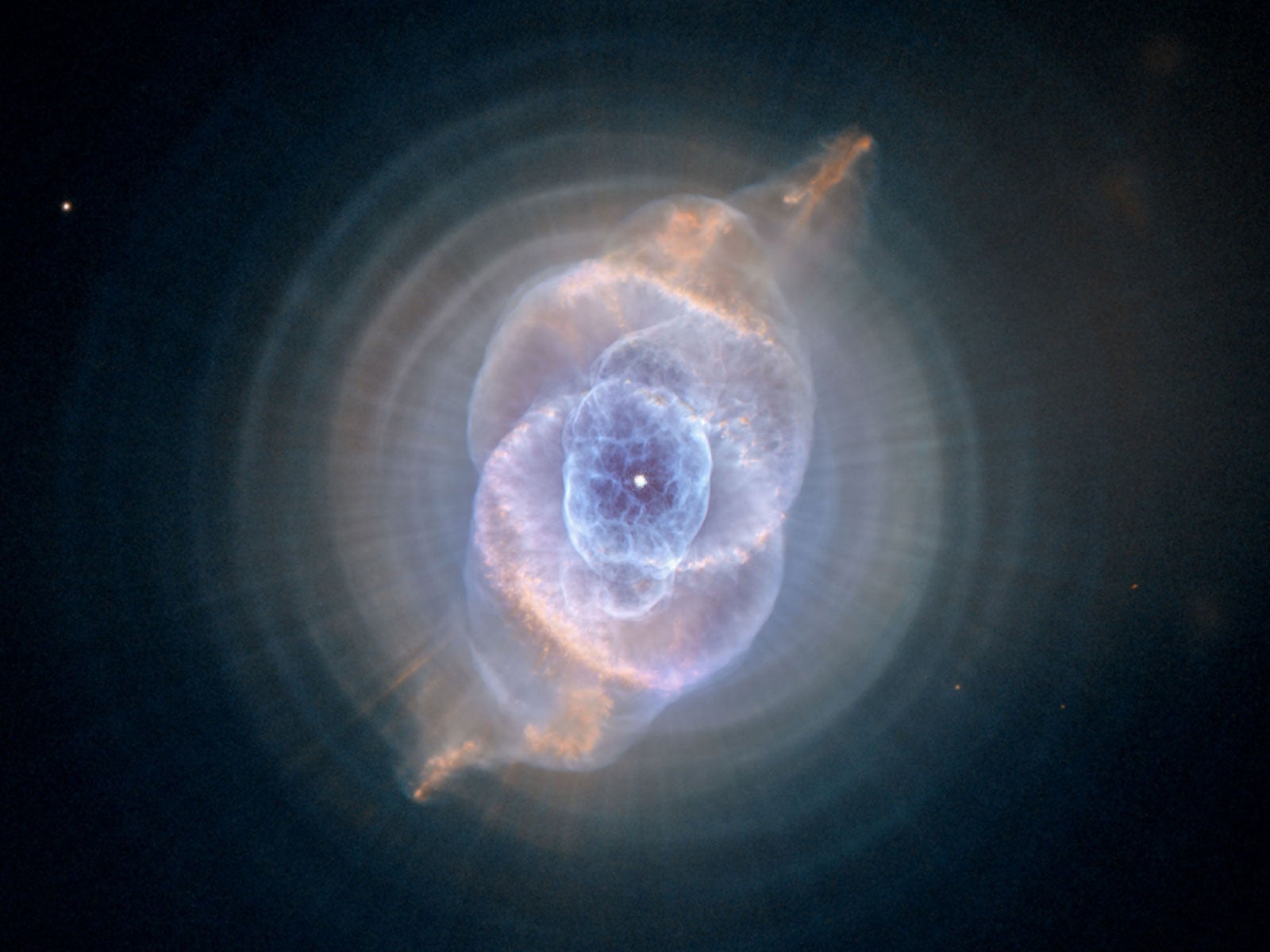Scientists may finally have discovered how famous ‘Cat’s Eye’ nebula was formed
The Cat’s Eye Nebula’s origins have evaded scientists since it was discovered around 300 years ago

Researchers may have discovered how the famous Cat's Eye Nebula may have formed.
The iconic nebula, discovered approximately 3300 light-years away from Earth in 1786, boasts a pair of symmetric rings that surround the nebula’s outer shell which scientists now believe were formed by precessing jet - suggesting that there is a binary star system at its centre.
The structure of this nebula has consistently baffled astrophysicists because it seemed to contract the accepted theories for how the giant clouds of dust and gas conventionally form.
Scientists now think that a stream of high-density gas ejected in opposite directions from the nebula’s central star - or stars - outlined a circle akin to a wobbling spinning top. However, models created by astronomers suggest that the rings are only partial and that the jet did not make a full rotation.
This also indicates that the jets were only a short-lived phenomenon, and since only binary stars can power a precessing jet in a planetary nebula, the findings are strong evidence that one exists at the centre of the Cat’s Eye.
“Precessing jets in planetary nebulae are relatively rare, so it’s important to understand how they contribute to the shaping of more complex systems like the Cat’s Eye”, Ryan Clairmont, the lead author of the paper on the Cat’s Eye Nebula where this research appeared and now a prospective undergraduate at Stanford University, said.
“Ultimately, understanding how they form provides insight into the eventual fate of our Sun, which will itself one day become a planetary nebula.”
To reconstruct the nebula’s three-dimensional structure, the researchers used spectral data from the San Pedro Martir National Observatory in Mexico.
These provide detailed information on the internal motion of material in the nebula that allowed Mr Clairmont to construct a 3D model to show how rings of high-density gas were wrapped around the outer shell of the Cat’s Eye. Using the three-dimensional model, the researchers were able to calculate the tilt and opening angle of the precessing jet based on the orientation of the rings.
Join our commenting forum
Join thought-provoking conversations, follow other Independent readers and see their replies
Comments


Bookmark popover
Removed from bookmarks